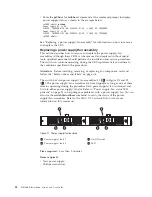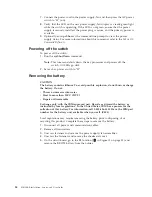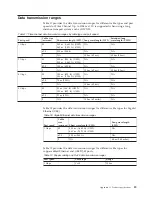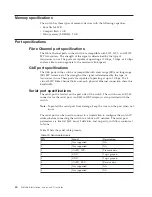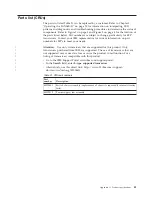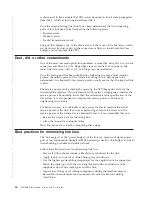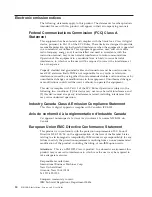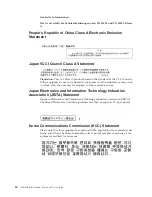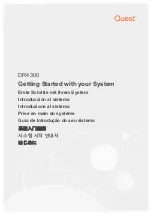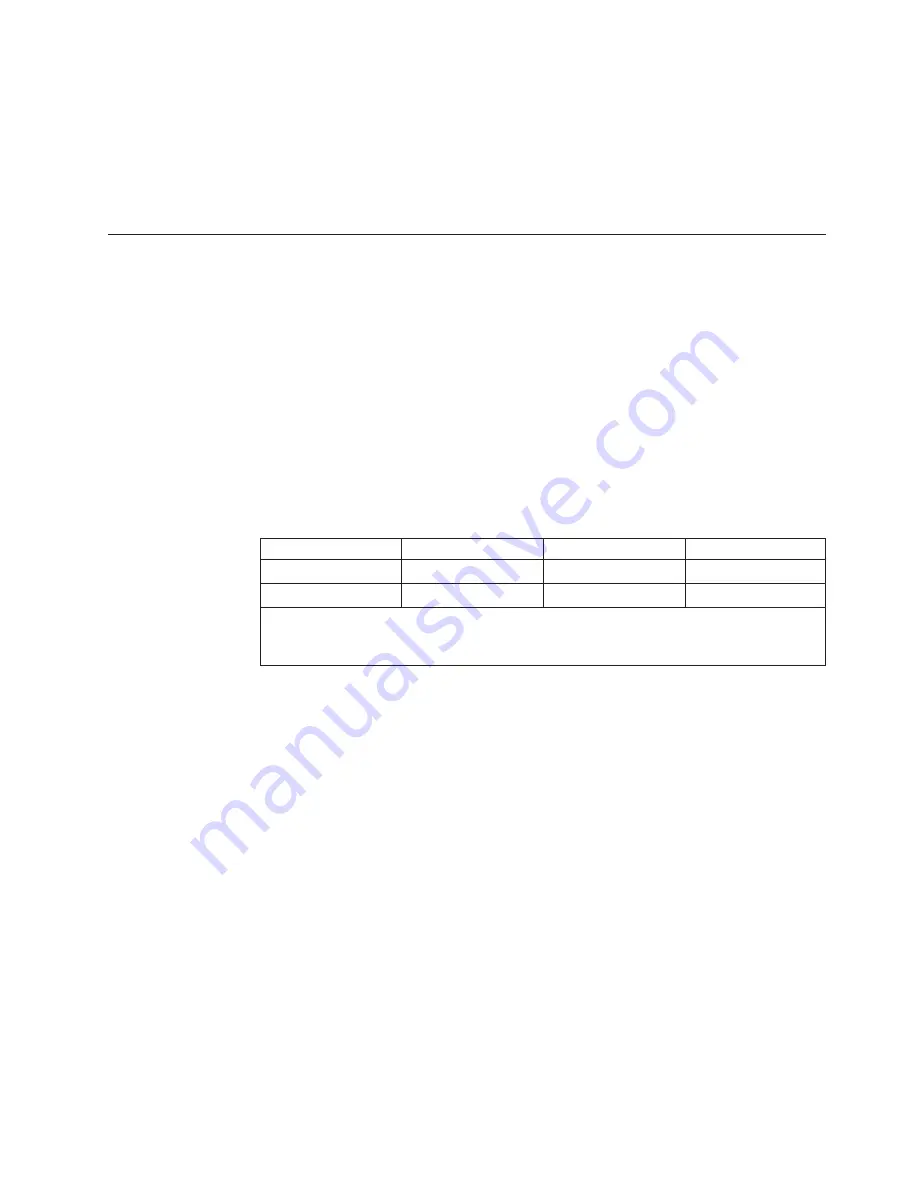
v
Become familiar with how to quickly determine the link budget and link loss of
selected sections of the cabling.
v
Account for power loss associated with future repairs and expansion.
v
Do not stress the cables.
v
Prototype a link with anticipated maximum cable distance and selected
components—and then take measurements to calculate the actual link loss
Attenuation on LWL connections
In the datacenter environment, there may be 8 Gbps or 4 Gbps LWL transceivers
that are connected to 2 Gbps LWL transceivers using single-mode fiber over short
distances. Such connections need to be optically engineered because there is a
possibility that the transmit power of the 8 Gbps / 4 Gbps LWL transceivers may
saturate the receiver of 2 Gbps LWL transceivers and cause CRC errors.
Attention:
This discussion does not apply to 16 Gbps transceivers since
connections between 16 Gbps and 2 Gbps transceivers is
not
supported.
Refer to Table 22 for the typical specifications of maximum transmit and receive
power of LWL transceivers. This information is also available in the information
technology industry standard "Fibre Channel – Physical Interface-4 (FC-PI-4)"
document.
Table 22. Specifications of LWL 10km transceivers
LWL SFP/SFP+
2GFC
4GFC
8GFC
Power, Tx (max) dB
-3
-1
+0.5
Power, Rx (max) dB
0 or -3
1
N/A
N/A
1
The maximum receive power specifications of some 2 Gbps LWL 10km transceivers can
vary from 0dB to -3dB. However, most 2 Gbps 10km transceivers specify a maximum
receive power of 0dB.
It is important to check the maximum receive power of the 2 Gbps LWL
transceiver in the manufacturer's datasheet.
Without taking into account connector and fiber losses, the transmit power of 8
Gbps / 4 Gbps LWL transceivers may be observed to overdrive the -3dB maximum
receive power of 2 Gbps LWL transceivers. If the maximum receive power of the 2
Gbps LWL transceiver is 0dB, a 4 Gbps LWL transceiver with a -1dB transmit
power will not overdrive the 2 Gbps transceiver. Although some 8 Gbps LWL
transceivers may reduce their transmit power to 4 Gbps levels, this may still
overdrive a 2 Gbps LWL transceiver.
Best Practice for LWL connections – Optically engineer a
long-distance connection
It is always a good practice to optically engineer a long-distance connection. Most
link issues caused by SFP incompatibility can be solved either by use of 4 Gbps
LWL transceivers or use of 8 Gbps LWL transceivers that employ rate select.
2G LWL SFP maximum receive power
The IBM SAN b-type 8 Gbps and 16 Gbps directors and switches use the latest
high bandwidth Fibre Channel technology and auto-negotiate to 16 Gbps, 8 Gbps,
4 Gbps, or 2 Gbps based on the link data rate capability of the attached transceiver.
Appendix B. Link troubleshooting
45
|
|
|
|
|
|
|
|
|
|
|
|
|
|
|
|
|
|
|
||
||||
||||
||||
|
|
|
|
|
|
|
|
|
|
|
|
|
|
|
|
|
|
|
|
|
|
Summary of Contents for SAN06B-R
Page 2: ......
Page 8: ...vi SAN06B R Installation Service and User Guide...
Page 12: ...x SAN06B R Installation Service and User Guide...
Page 14: ...xii SAN06B R Installation Service and User Guide...
Page 24: ...xxii SAN06B R Installation Service and User Guide...
Page 32: ...6 SAN06B R Installation Service and User Guide...
Page 62: ...36 SAN06B R Installation Service and User Guide...
Page 68: ...42 SAN06B R Installation Service and User Guide...
Page 80: ...54 SAN06B R Installation Service and User Guide...
Page 83: ......
Page 84: ...Part Number 98Y5370 Printed in USA GC27 2270 02 1P P N 98Y5370...


